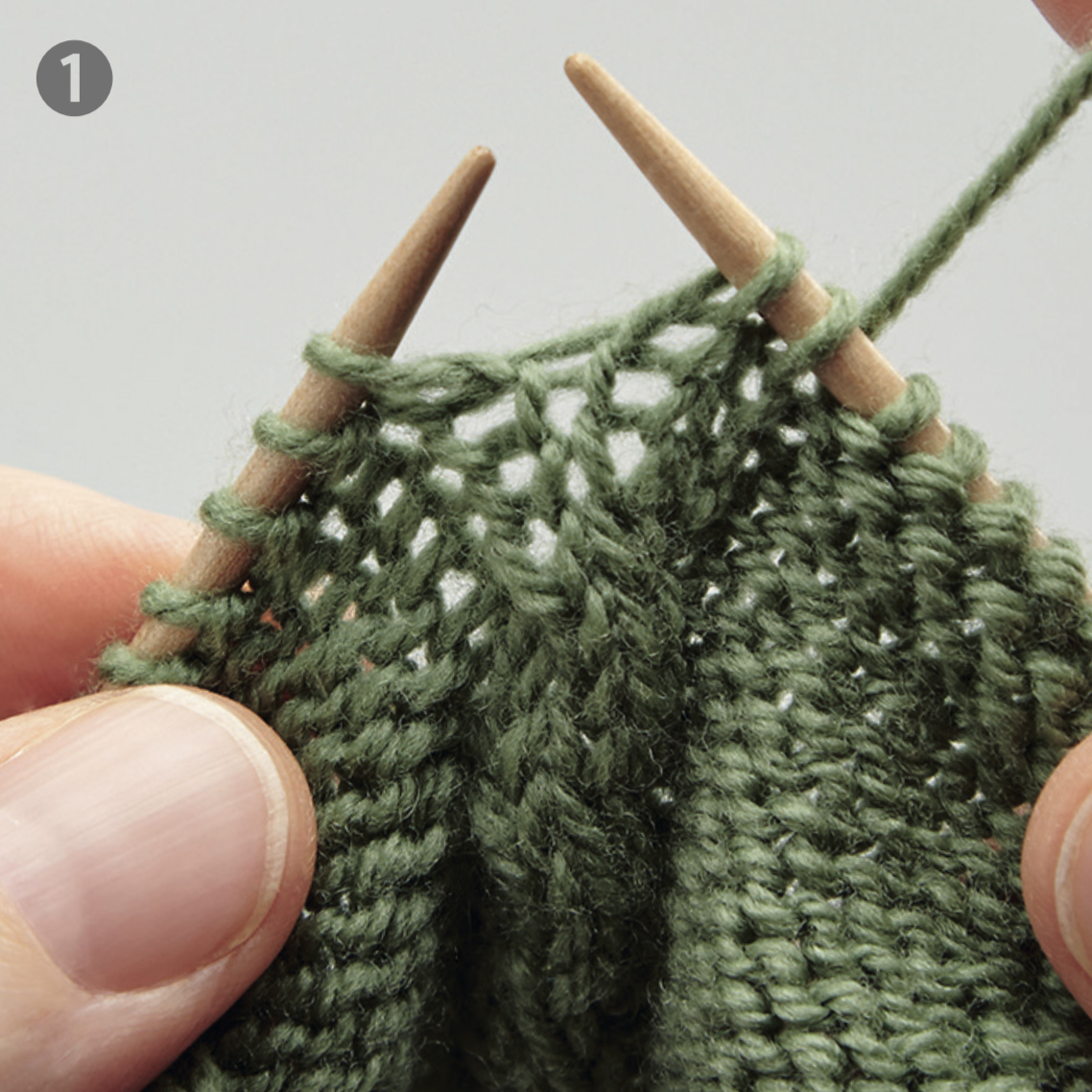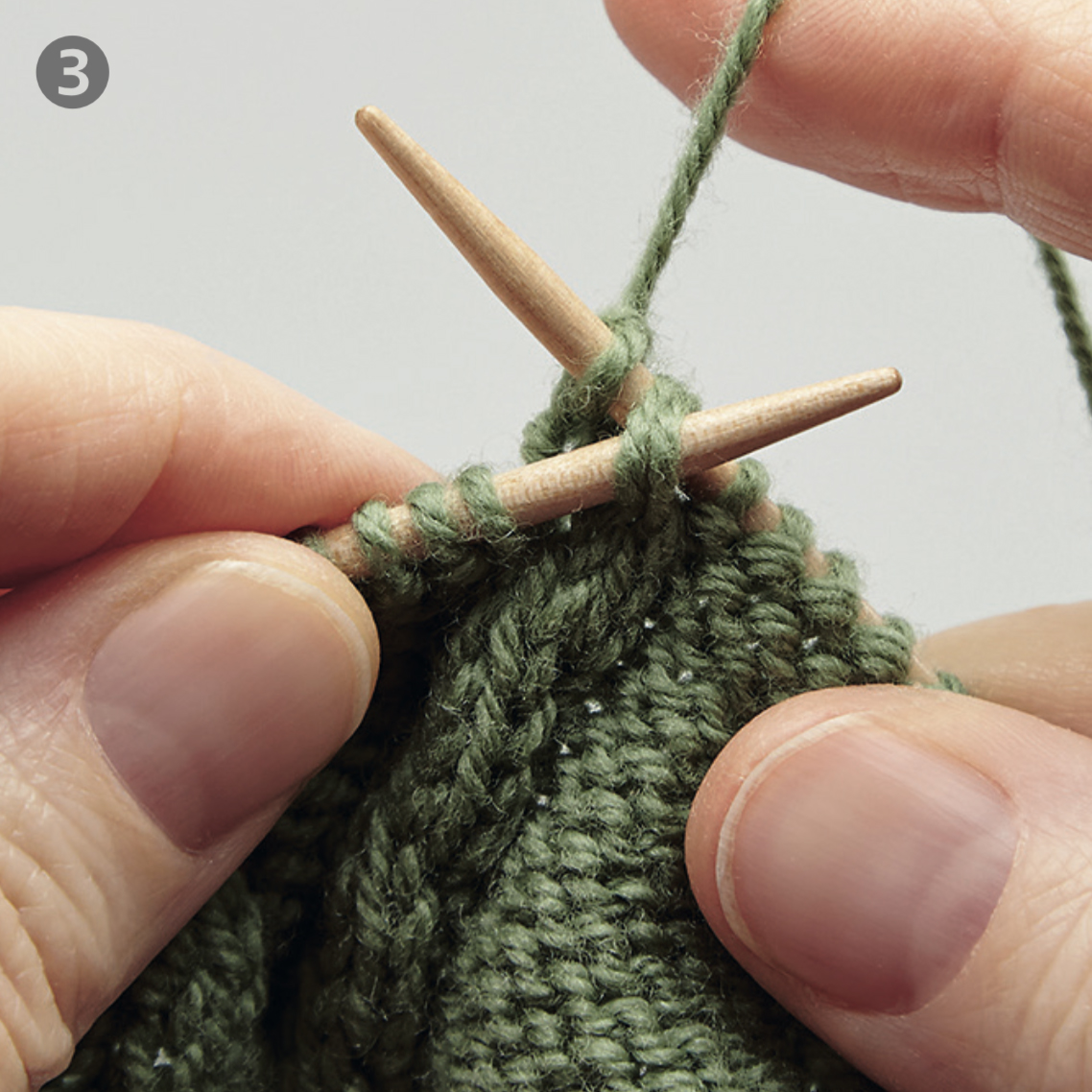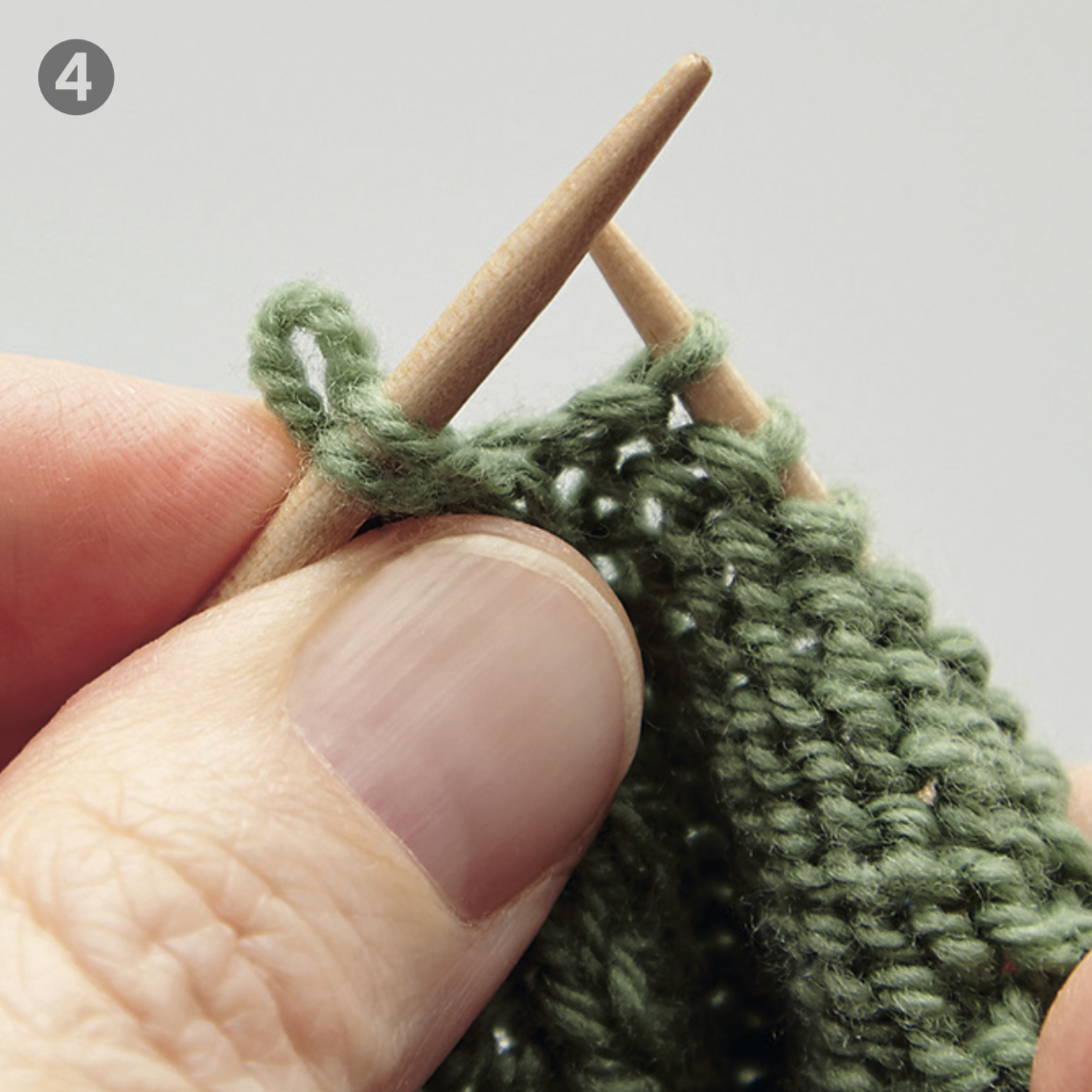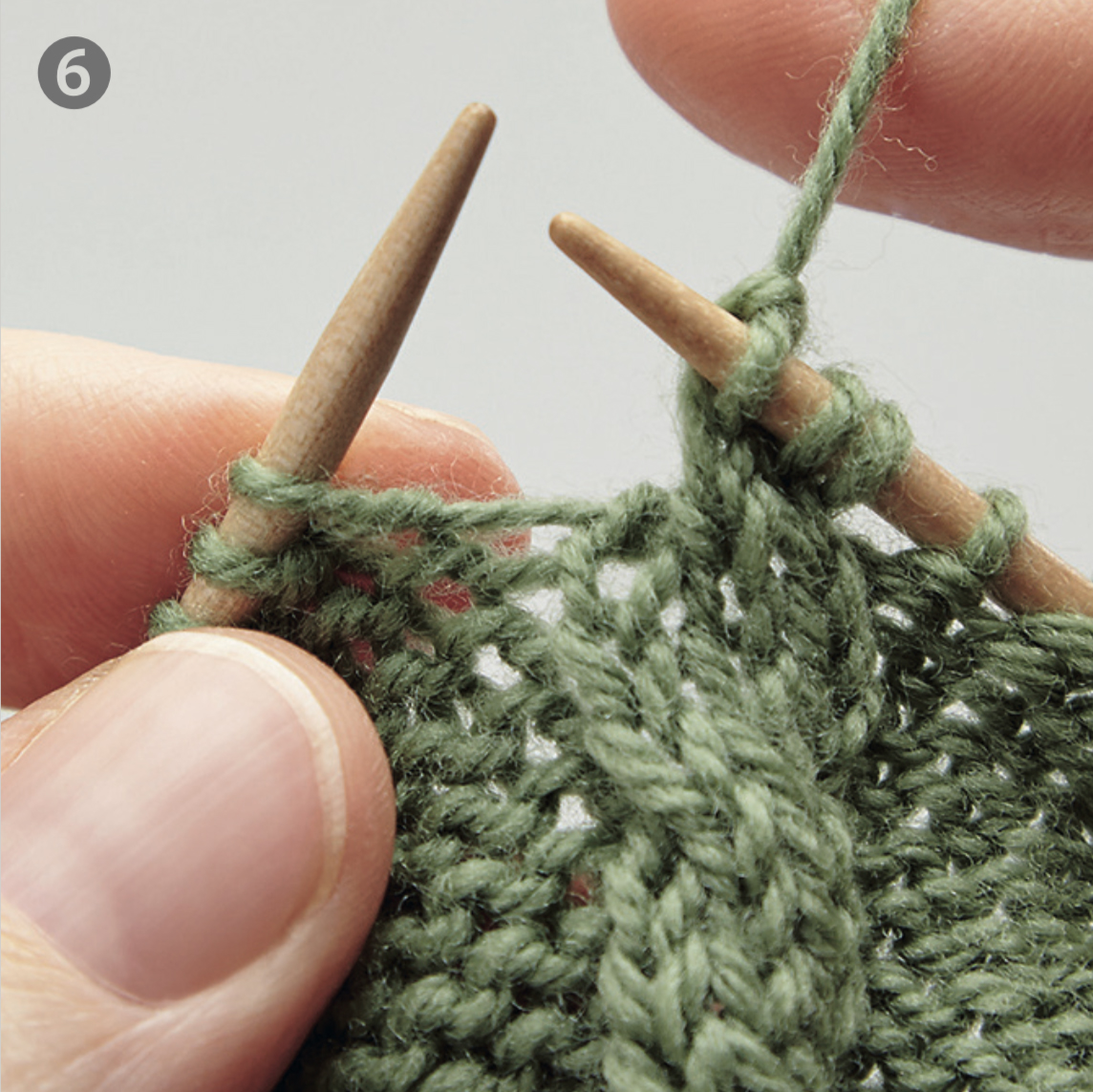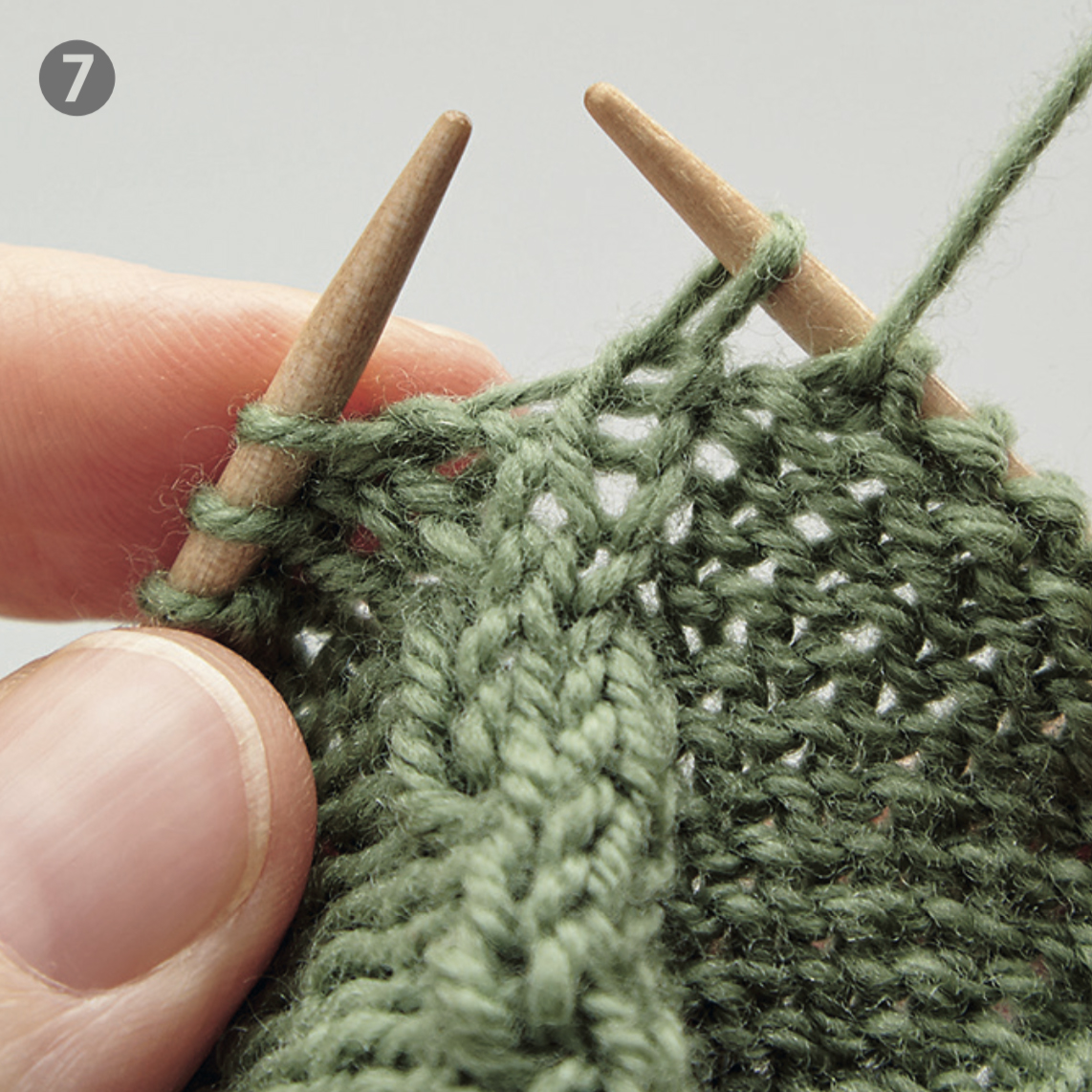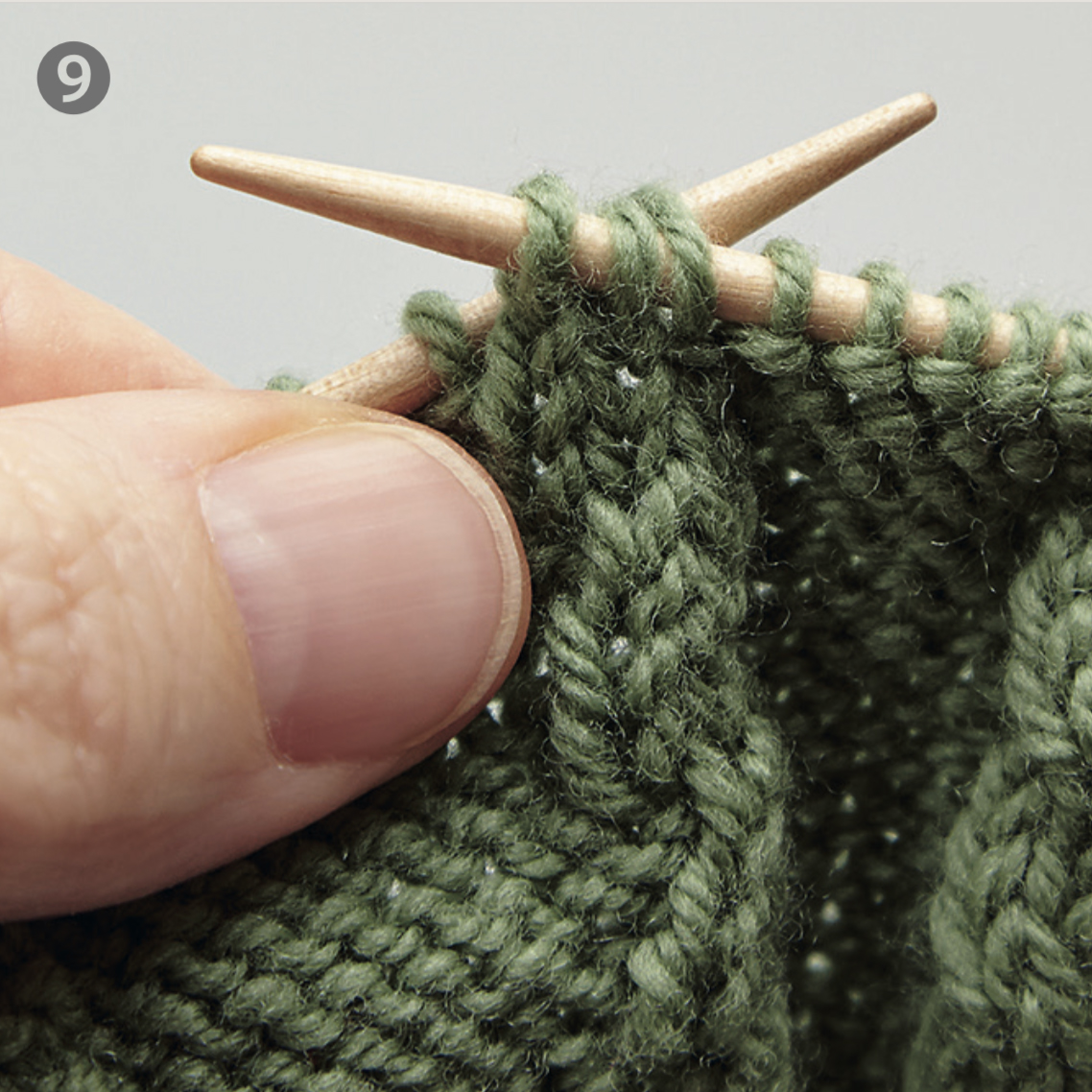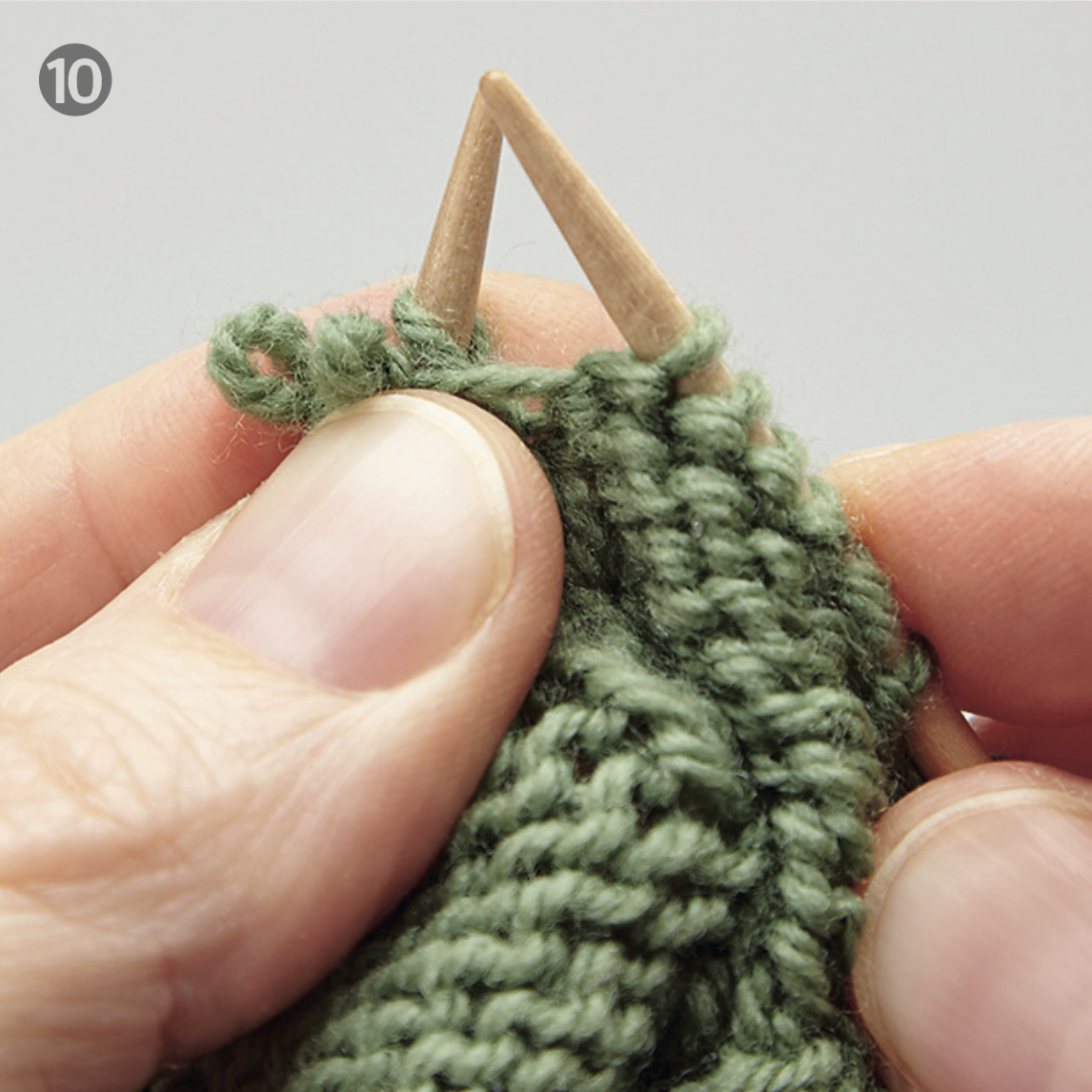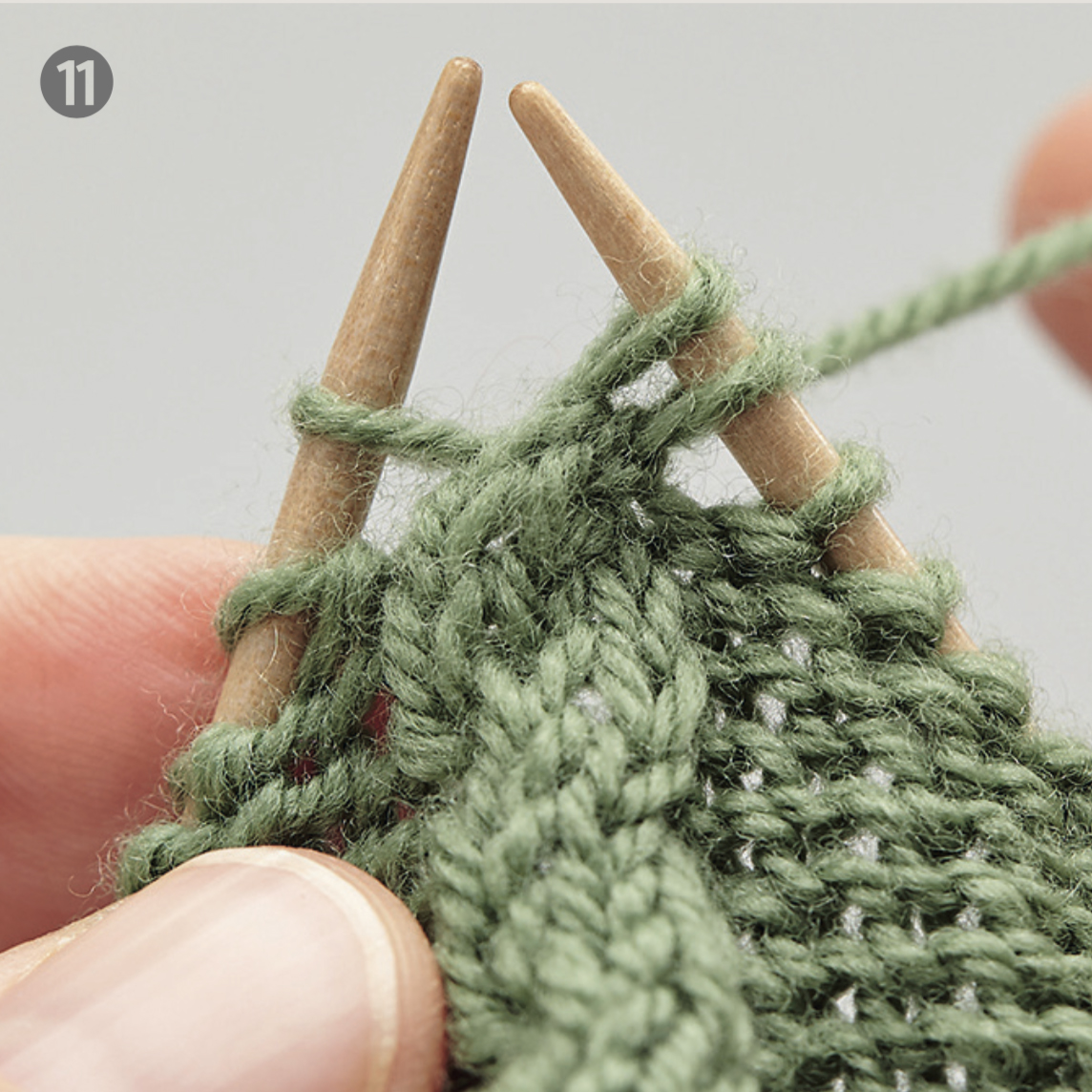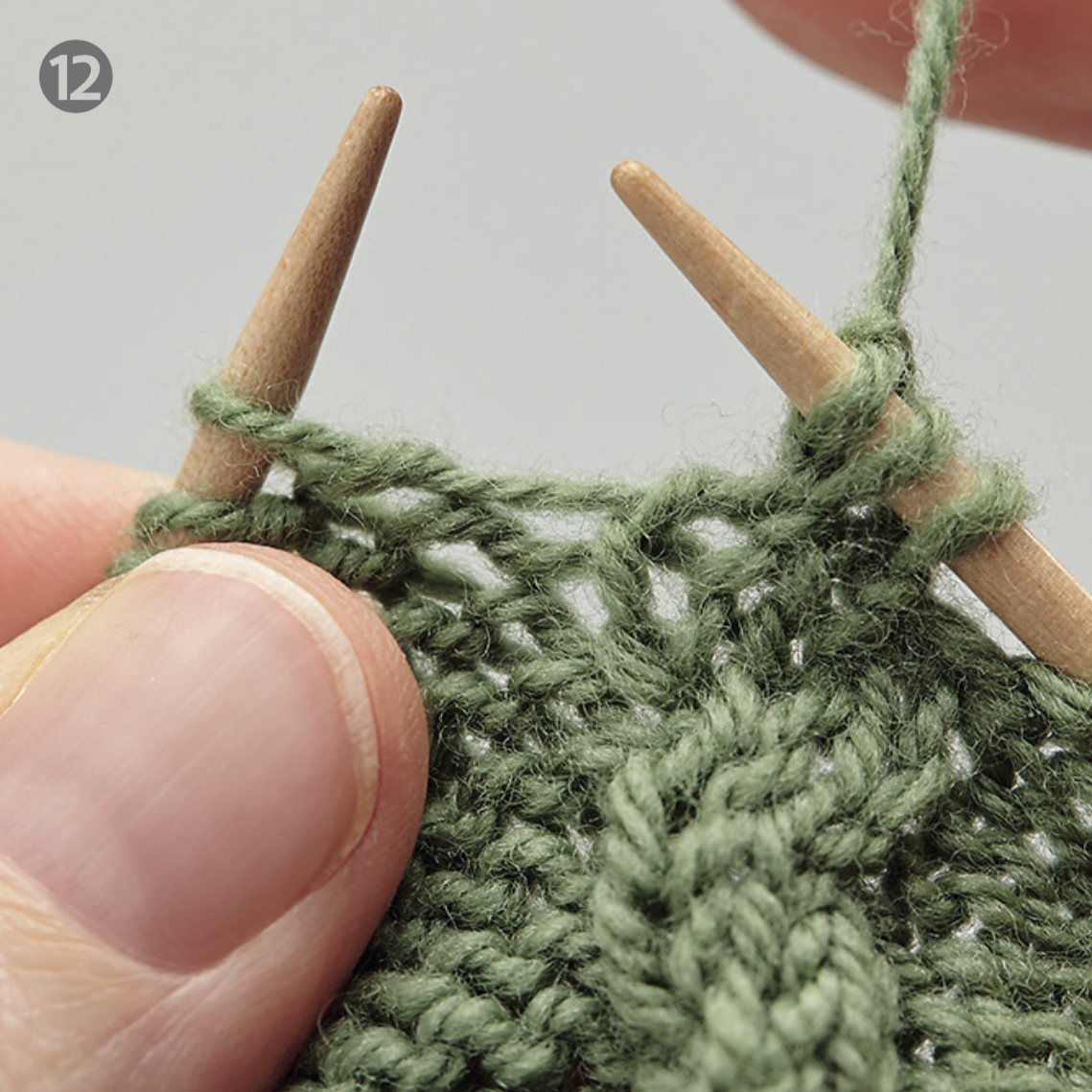Knitting cables without the use of a cable needle may seem a bit wild and dangerous, but rest assured, it’s very easy and will save you lots of time and fiddling.
It’s especially quick with smaller cables of three or four stitches. The cables whizz past without all that messing around with a cable needle. You may also find your cables look tidier.
To do this, you’ll be slipping and knitting the stitches that make up your cable and then doing the ‘pinch and pull’ manoeuvre: pinching the stitches with finger and thumb while pulling the needle out and then sliding it back in to reposition the stitches in a different order. Making sure your tension is even as you slip and knit will help keep the cables neater, and snugly knitting the first stitch after your completed cable will help reduce any gaps in your fabric.
It may help to at first try this technique using a yarn that isn’t too slippery, because your stitches will be more likely to stay put if they are knitted in a woollier yarn. Also, trying it out on thicker yarns such as an aran-weight will make everything easier to see and manipulate.
Here are examples of how to work Cable 3 Front (C3F) and Cable 3 Back (C3B), which show the basics of needle movement, and can easily be translated to cables with larger numbers of stitches.
How to cable without a cable needle video
We show you how to cable without a cable needle in the video walthrough with aC3B and C3F knitting demo
